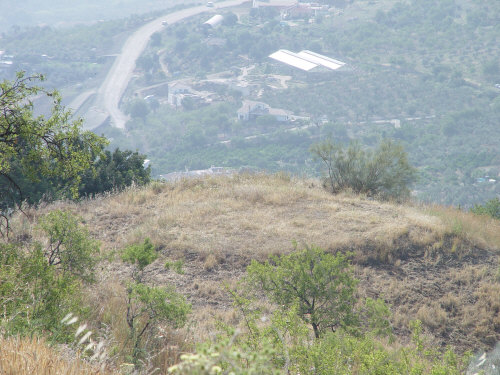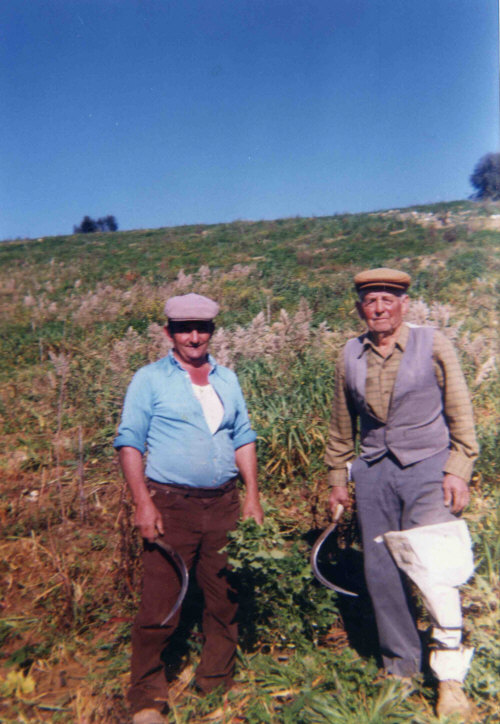|

FROM
THESEED FIELDS TO THE THRESHING FLOOR
Agriculture has until very recent times been
the main activity of the inhabitants of the
Sierra de las Nieves, because now the
construction industry and related services
have relegated it to a second place over the
last decades. This agricultural activity,
based on the Mediterranean trio of wheat,
wine and olives, has shaped a modus vivendi
that characterizes and unites the older
members of our community.
Below, we shall take a general look at the
daily activities of people and their
occupation. The first in this chapter is:
from the seed field to the threshing floor.
This cycle began in Autumn, with the first
rains, when the fields filled with farm
labourers with their teams of mules or oxen
to till the soil. Once the earth was worked,
it was furrowed so that the grain could be
scattered, or sown by placing in holes after
the furrow had been opened by the ploughing
process.

In Winter, and even in Spring, once the
grain had germinated and had reached
sufficient height, the ground was weeded.
There was little more work to be done to the
cereals (wheat or barley) or to the
leguminous cops (chick peas, broad beans,
peas) until the arrival of Summer.
Once dried by the persistent action of the
sun, the teams of farmhands began the
harvesting, or uprooting in the case of
chick peas. Sickle in hand, protected by a
hand grip and apron, they reaped the fields,
forming bundle after bundle, stopping only
to slake their thirst with water from a
pitcher already warmed by the sun.
After reaping, the sheaves had to be taken
to the threshing floor, that is to say, they
had to be pulled or dragged, for which mules
working in tandem were required. The mules
were harnessed together to pull the bundles
of cereal. Once they arrived at the
threshing floor, the sheaves were spread
around the floor to separate the grain from
the stalks and chaff, first by being trodden
our by animals, and later with the aid of a
threshing cylinder that broke up the straw
and separated the grain from the chaff (the
pod that covers the grain) This was how the
stacks of unthreshed grain were formed,
which were nothing more than the stalks of
grain piled up on the threshing room floor.
Next, the unthreshed grain was tossed
through a current of air with hay forks and
wooden spades to separate the grain from the
straw. The duration of this work depended on
the force and direction of the wind, because
if the wind was variable, the unthreshed
grain had to be thrown from the direction in
which it was blowing at any given time. For
this reason, the threshing floors were
situated high up and open to the beating of
the wind.

To help with the threshing process, the
chaff was swept and raked (to clear residues
of straw, ears of wheat, unchaffed grain,
etc.) completing the process by sifting and
packing the grain. In the packing of grain,
the units of measurement prior to the metric
decimal system were utilized, these having
all but disappeared nowadays, such as
“fanega” (1.58 bushels), “cuartilla” and its
corresponding divisions (almud, half almud,
celemín, cuartillo, etc.).
Now the only task left was to store the
grain and straw in the barns and haystacks,
which was also hard work because the hay had
to be stored using sheets and sacks in a
suffocating heat, and putting up with the
itching and the dust produced by the
recently harvested grain and the straw.
Then came the time to return to the fields
with the livestock and to finish off the
stubble left by the reaping. When Autumn
came, this important cycle began all over
again, having been repeated since ancient
times and which has only been changed by
industrialization, although we can ask
ourselves whether any advances have been
made.
|